Dryer Vent system Safety Facts:
Did You Know that: “Consumer Product Safety Commission (CPSC) states that over 24,000 house fires and nearly $100 million in property damage annually are related to faulty clothes dryer vent installations.
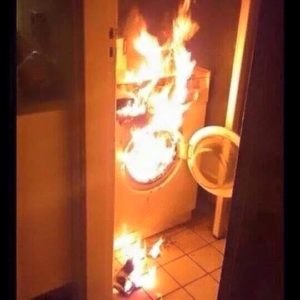
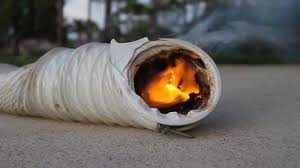
It is said, during a normal clothes dryer drying cycle, up to a gallon of water may be drawn out of the clothes in the form of water vapor. The purpose of the dryer vent system is to transport this water vapor, and the lint that accompanies it, to a safe location outside the home. The most commonly seen dryer vent material is flexible tubing. Vinyl is a type of plastic and it can easily melt and cause the fire to spread and lead to a house fire. This material, most often white and ribbed, tends to allow for lint to readily accumulate inside of it. It has been banned for use with a clothes dryer since the late 1970’s. Lint is a very flammable material and it only takes is a small spark to ignite it. This is the most common cause of dryer fires in the USA.
The more lint that fills a clothes dryer vent, the less air is removed and the more energy the clothes dryer consumes to try to dry the clothes as air won’t freely flow through the clogged vent material. This, in turn, causes the drying cycle to be much longer than normal and raises utility bills. A clogged dryer vent can make the dryer run as much as 3 times longer than a cleaned one.
Another improper dryer vent material that we routinely see installed is mylar foil tubing. It is a flexible ribbed shiny tubing that many homeowners and contractors have installed and they wrongly assume that it is made of metal because it is shiny. Mylar foil tubing is not approved for use as a clothes dryer vent material and should not be used for this application. The photo below shows an installation of mylar foil tubing which actually runs behind a fixed wall covering and was the only dryer vent material installed in this particular home.
According to the National building codes no more than 8ft of transition duct is allowed.

The International Residential Code (IRC) section M1501 requires that clothes dryer vents be constructed of at least 0.016″ thick rigid metal, have smooth interior surfaces, and shall have sheet metal screws not extending more than 1/8th of an inch into the duct. The clothes dryer vent should meet the UL 2158A standard. Sheet metal screws penetrating into the material can allow lint to get caught on the screws and possibly clog the vent over time. The use of Metal tape, UL2158A, and 4 inch strap clamps should be used to properly secure the line in place.
Dryer ventilation systems should only terminate to the home’s exterior and have a proper damper cover on the exterior of the home, to help prevent water, birds, and insects from entering the duct. The exterior cover should not have a screen or fine mesh, since it will cause lint build up and block the vent over time. Venting a clothes dryer into a garage, basement, attic, or anywhere else inside the home can lead to excessively high humidity levels, carbon monoxide, mold, and an increased fire risk. Also, a clothes dryer ventilation line should terminate to an area of the home’s exterior where it cannot be blocked by vegetation, snow, or dirt, and be at least 3 feet from doors and windows. The vent also should not terminate near an air conditioning compressor as the dryer lint can accumulate on the A/C compressor which can prevent proper operation of the A/C system.
Flexible rigid metal ducting (this specific material is only slightly bendable) is recommended where the rigid metal duct material connects to the clothes dryer. The photo below shows flexible rigid metal ducting. Notice how different this rigid metal material below looks compared to the mylar foil ducting shown in the above photo. If the clothes dryer and exterior vent are in close proximity, a single piece of flexible rigid metal duct can often be safely used as the sole duct, assuming it does not pass behind a wall, floor, or ceiling covering.
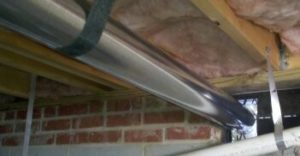
WE also sometimes find dryer vents that far exceed 40 feet. I recommend that the vent system be modified to terminate to an alternate exterior location closer to the laundry appliances to allow a shorter run. Most standards call for clothes dryer vents to be no more than 25 feet in length, minus 5ft for every elbow. Gas dryers, though, are often permitted to have ducts no longer than 35 feet in length. The more bends in the line that exist, the shorter the overall length should be. For every 90 degree bend, the vent should be shortened by 5 feet; for every 45 degree bend, the vent should be shortened by 2.5 feet. An exception exists if the clothes dryer’s manufacturer specifically permits a longer vent but, in most cases, the inspector does not have this documentation from the clothes dryer’s manufacturer.
We also recommend that the clothes dryer vent system be thoroughly cleaned at least once per year as preventative maintenance.
All of our technicians are equipped with the very best tools in the industry. We have air tools that attached to our truck mounted 175psi compressors and the very best brush kits in the industry.
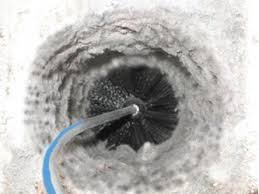
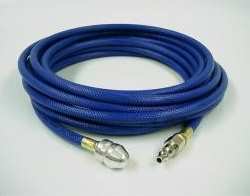
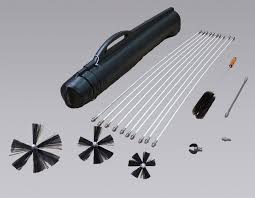
House fires related to improper or blocked dryer vents are easily prevented and a little bit of preventive maintenance can help save lives. When was the last time you inspected and cleaned your clothes dryer vent? Your family’s safety, and those of your clients, may depend on it. Have one of our Certified Technicians clean your dryer vent and help prevent a fire from happening in your home.
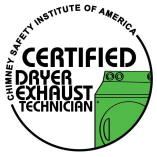
Please visit www.Dryerventcleaningnewjersey.com for more information on your home’s safety tips.

